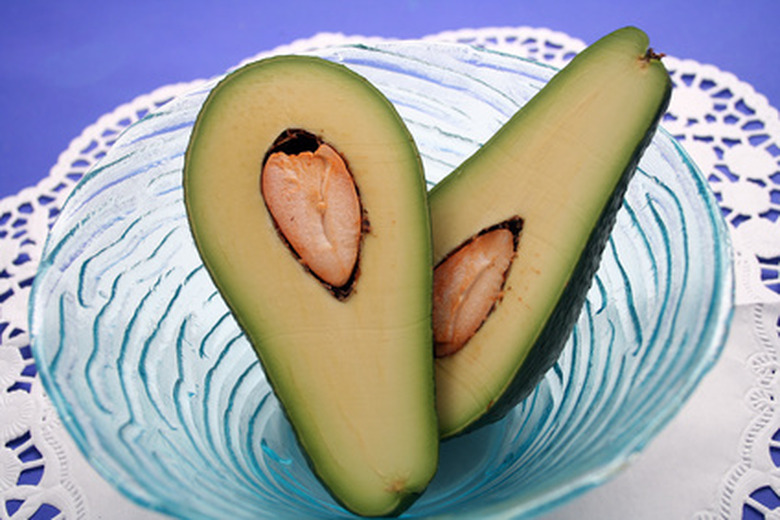Can I Put Avocado Pits In My Compost Pile?
Avocado pits sprout easily in the moist conditions of a compost pile, but they also decompose over time. The avocado pit opens along a vertical axis and the sprout emerges within two to four weeks. The elongated tap root emerges first at one end of the seed, followed by a stem and cotyledon leaves from the other end.
Avocado pits sprout easily in the moist conditions of a compost pile, but they also decompose over time. The avocado pit opens along a vertical axis and the sprout emerges within two to four weeks. The elongated tap root emerges first at one end of the seed, followed by a stem and cotyledon leaves from the other end. Avocado seed growth can begin but not continue in the sunless compost pile environment.
Compost Process
The composting process involves organic matter, moisture, oxygen and microorganisms. Organic matter includes plant residues — such as avocado pits — and some animal manures. The mixture includes brown materials such as dry leaves, old newspaper, hay, dry manure and green materials such as grass clippings, kitchen waste and yard trimmings. All parts of an avocado can be used in a compost pile. The materials are spread in 3- to 5-inch layers, beginning with browns. An avocado pit is a brown material and should be placed in the bottom layer of the pile.
- Avocado pits sprout easily in the moist conditions of a compost pile, but they also decompose over time.
- Avocado seed growth can begin but not continue in the sunless compost pile environment.
Moisture
Moisture is added to the pile by sprinkling each layer until it is wet but not soggy. Water helps start the decomposition process. Carbon in the brown materials and nitrogen in the green materials feed the bacteria growing in the pile. Moisture helps these materials decay and allows microorganisms to feed. The speed of the decomposition process depends on the size of the brown and green materials and the amount of water and air the pile receives.
Temperature
Decomposition occurs most rapidly when the compost pile reaches 110 to 160 degrees F. A new compost pile reaches this temperature within two weeks. The pile appears to have settled and reduced in size. This is an indication that decomposition is taking place. The less porous materials, such as avocado pits and fibrous plant stems that are at the bottom of the compost pile, decompose at the slowest rate. When the compost pile temperature falls below 110 degrees, the decay process slows down. Incorporating more oxygen and moisture into the pile increases the temperature.
- Moisture is added to the pile by sprinkling each layer until it is wet but not soggy.
- The less porous materials, such as avocado pits and fibrous plant stems that are at the bottom of the compost pile, decompose at the slowest rate.
Ongoing Care
Insects such as ants, earwigs, flies, slugs, sow bugs and red worms in the pile are an indication that the pile is composting correctly. White weblike material is created by actinomycete, part of the microorganism community that creates the decay process. Fresh organic materials are easily added to the compost pile as the lower layers turn to mature compost. Oxygen is incorporated by lifting the top layers with a pitchfork or compost stirring tool. The microorganism community requires oxygen to reproduce and continue creating decay. Avocado pits and woody stems may take up to six months to decompose.
